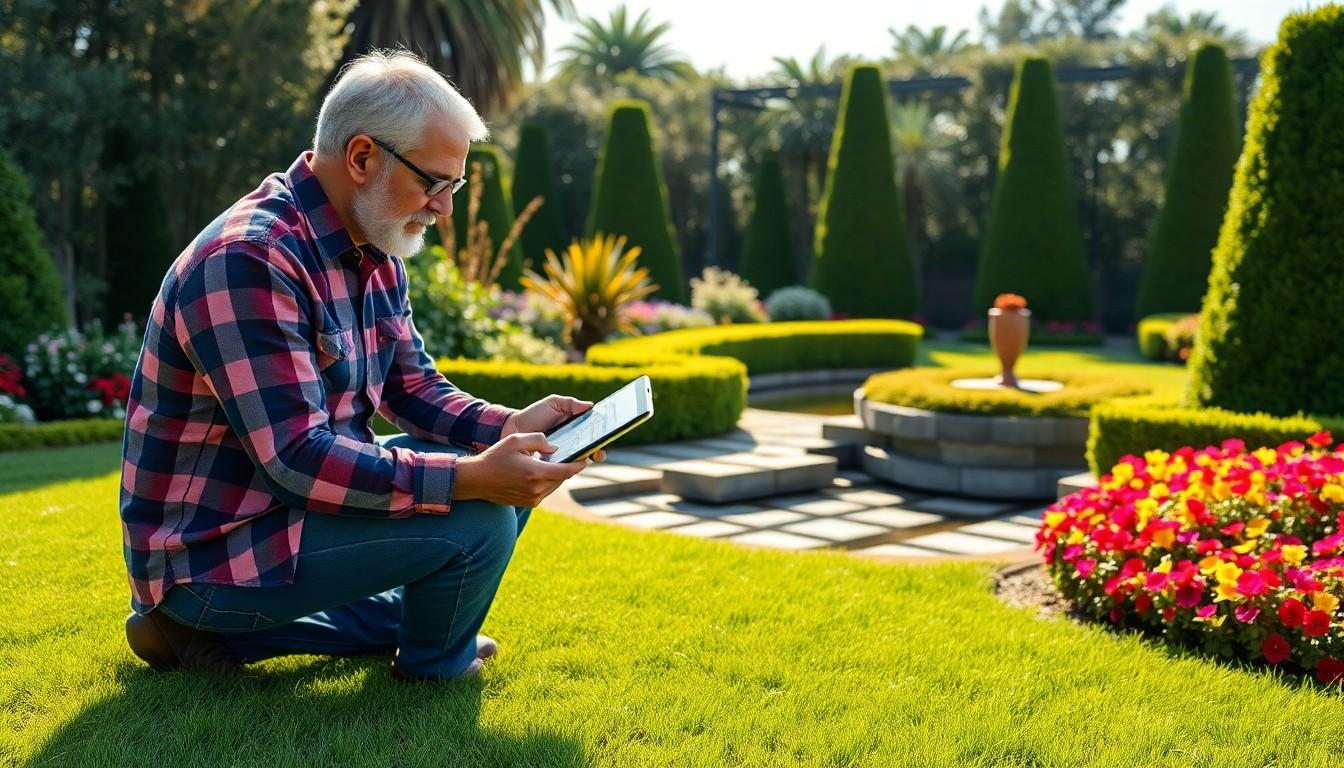Phone:
(701)814-6992
Physical address:
6296 Donnelly Plaza
Ratkeville, Bahamas.

Imagine transforming your outdoor space into a paradise that even Mother Nature would envy. Enter the world of landscaping vectors, where creativity meets precision. These digital designs are like the secret sauce for landscape architects and DIY enthusiasts alike, turning ordinary yards into breathtaking masterpieces.
Landscaping vectors represent sophisticated design elements within digital design software, emphasizing precision and adaptability. These vectors help define contours, shapes, and colors of outdoor environments. Utilizing scalable graphics, landscape architects craft intricate plans that enhance functionality and aesthetics.
When applying landscaping vectors, professionals streamline their workflows, allowing for quicker revisions and adjustments. Removing the constraints of traditional methods, they harness software to visualize potential transformations in real-time. Designers can manipulate vector points, adapting curves and lines to match specific landscapes.
In DIY projects, enthusiasts benefit from predefined vector templates. Templates simplify the design process, making it accessible for individuals without formal training. Garden layouts, patio designs, and irrigation systems become manageable tasks with these resources.
Vectors also facilitate collaboration among teams. Architects, engineers, and horticulturists often share files, ensuring everyone interprets the design accurately. This process minimizes miscommunication and fosters efficient project progress.
Applications of landscaping vectors extend beyond initial design. Maintenance plans, seasonal changes, and modifications can all be documented through vector images. Visual representations keep stakeholders informed as projects evolve.
The integration of landscaping vectors significantly enhances both professional and personal landscaping projects. Digital tools empower users to create visually stunning and functional outdoor spaces efficiently. By mastering these resources, individuals optimize the potential of their landscapes, transforming ordinary yards into extraordinary environments.

Landscaping vectors play a significant role in enhancing outdoor spaces. They offer various benefits that contribute to both environmental health and aesthetic appeal.
Landscaping vectors promote sustainable practices by aiding in the design of eco-friendly spaces. They allow for precise planning of plant placements, which can enhance local biodiversity. Using these vectors enables optimal water management through effective design, reducing runoff and erosion. Additionally, vector-driven designs incorporate native plants, which require less maintenance and support local wildlife. Efficient layouts help maximize sunlight exposure, improving photosynthesis and plant health. Ultimately, environment-friendly designs created using landscaping vectors foster ecological balance, enhancing the overall health of outdoor spaces.
Landscaping vectors significantly elevate visual appeal by enabling detailed and creative designs. They provide a foundation for graphic representation, enhancing the clarity of shapes and contours in outdoor layouts. Creative use of colors and textures through vectors can transform any ordinary yard into an inviting retreat. Users can envision their projects through accurate visualizations, ensuring satisfaction with the final look. Precise alignment of elements with landscaping vectors fosters harmony and balance in design. Engaging designs not only attract the eye but also create cohesive outdoor environments that reflect personal style.
Landscaping vectors are integral to creating beautiful outdoor spaces. They encompass various components that contribute to effective designs.
Types of landscapes include residential, commercial, and public gardens. Residential spaces often emphasize personal style, making use of sustainable plants. Commercial landscapes focus on functionality while promoting brand identity. Public gardens serve community needs, providing spaces for recreation and education. Each type offers unique challenges and opportunities, influencing how landscaping vectors are utilized. They help visualize different contexts and ensure that designs meet specific requirements.
Landscape design elements incorporate plants, hardscapes, and water features. Plants create layers and textures in outdoor spaces, enhancing biodiversity and aesthetics. Hardscapes, such as pathways, walls, and patios, provide structure and functionality while complementing natural elements. Water features, including ponds and fountains, add serenity and attract wildlife. Achieving balance among these design elements is crucial for a cohesive look. Landscaping vectors facilitate this process by illustrating how each component interacts, ensuring that designs are both practical and visually appealing.
Implementing landscaping vectors transforms the design process, enhancing clarity and creativity in outdoor spaces. Professionals and DIY enthusiasts alike benefit from structured approaches that utilize these sophisticated digital tools.
The planning phase involves considering the unique attributes of each landscape. Begin with site analysis, assessing soil conditions, sunlight exposure, and existing flora. Utilize landscaping vectors to map out potential layouts while ensuring functionality. Engaging in sketching allows for idea exploration before committing to specific designs. Precise measurements and dimensions aid in achieving balance among plants, hardscapes, and water features. Incorporating feedback from stakeholders fosters collaboration and enhances the project’s overall vision.
Numerous tools simplify the implementation of landscaping vectors. Design software such as AutoCAD and SketchUp offer robust functionalities for creating detailed vector designs. Additionally, programs like Adobe Illustrator support the development of custom templates. Techniques employed include layering designs for depth, color gradients to convey changes, and applying textures for realism. Reports indicate that the use of 3D modeling enhances visual communication, allowing for accurate project representations. This approach streamlines revisions, ensuring that all parties align with the intended design vision.
Landscaping vectors come with certain challenges that can impact their effectiveness in design. Key obstacles include environmental considerations and maintenance issues.
Landscaping vectors must consider the local environment and ecological impact. Specific factors include soil types and existing flora, which influence plant selection. Each region’s climate also plays a crucial role in determining suitable plants and layouts. Implementing sustainable practices remains essential, as vector designs can contribute to biodiversity and ecosystem health. Proper planning helps mitigate issues like water runoff and erosion, thus ensuring resilient landscapes. Regulatory requirements, such as local zoning and conservation laws, may affect design choices, so compliance is vital for successful project completion.
Maintenance poses another significant challenge in landscaping vector projects. Complexity often arises from the choice of plants and materials, with some requiring more upkeep than others. Landscaping designs created with vectors should consider long-term maintenance needs to minimize complications. Seasonal changes can affect appearance and health, demanding regular attention from property owners. Irrigation systems may need adjustment based on plant growth, while hardscapes require periodic maintenance to prevent wear. Ultimately, thorough planning addresses potential maintenance challenges and sustains the landscape’s visual appeal and functionality over time.
Landscaping vectors are invaluable tools that empower both professionals and enthusiasts to craft beautiful outdoor spaces. By leveraging digital designs, users can enhance creativity and precision while ensuring their projects meet environmental standards.
The ability to visualize and adapt designs in real-time fosters collaboration among various stakeholders, streamlining the entire planning process. With their focus on sustainability and aesthetics, landscaping vectors not only improve the look of outdoor areas but also promote ecological health.
As landscapes evolve, these vectors play a crucial role in maintaining clarity and functionality, making them essential for anyone looking to elevate their outdoor environments.